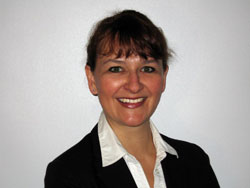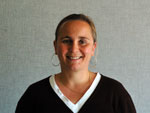
For Release: October 3, 2011
131st AES Convention Papers & Posters Set New Standards
Strong Submissions Produce High Level Selections
NEW YORK: “A clear reflection of today’s Pro Audio environment, this year’s Papers submissions have been notably diverse and ambitious,” remarked AES 131st Convention Chair Jim Anderson. “Papers Co-Chairs Agnieszka Roginska and Veronique Larcher and the members of their extraordinary Review Board have performed in an exemplary fashion. Their selections address many of the key issues faced by pro audio practitioners and by students planning careers in our rapidly evolving industry.”
Scheduled for Oct. 20-23 in NY’s Javits Center, the AES Convention anticipates close to 20,000 attendees from around the globe, and upwards of 300 exhibitors.
131st AES CONVENTION PAPER PRESENTATIONS INCLUDE:
Beyond Surround Sound—Creation, Coding and Reproduction of 3-D Audio Soundtracks: Jean-Marc Jot, Zoran Fejzo, DTS, Inc. - A proposal for a flexible and practical end-to-end solution for creating, encoding, transmitting, decoding, and reproducing spatial audio soundtracks. Compatible with legacy surround-sound decoders, 3-D soundtracks enable the representation of a three-dimensional audio scene, irrespective of the listener’s playback system configuration.
The SCENIC Project: Space-Time Audio Processing for Environment-Aware Acoustic Sensing and Rendering: (Multiple contributors) - SCENIC is designed to develop a harmonized corpus of methodologies for environment-aware acoustic sensing and rendering. The project focused on space-time acoustic processing solutions that engage the production environment to help achieve its goal. Solutions cover a wide range of applications, including acoustic self-calibration.
Multichannel Sound Reproduction in the Environment for Auditory Research—Mark A. Ericson, Army Research Laboratory - The U.S. Army’s new EAR Lab isdedicated to spatial sound perception and speech communication research. It is comprised of four indoor research spaces; an outdoor space (Open EAR), and a common control center. Digital audio signals are routed through state-of-the-art RME hardware to over 600 loudspeakers and microphone channels throughout the facility. Acoustic environments range from anechoic and real field, through various soundscapes.
The Impact of Producers’ Comments and Musicians’ Self-Evaluation on Performance During Recording Sessions: Amandine Pras, Catherine Guastavino, McGill University, Montreal - In the recording studio, musicians constantly repeat the same musical composition without the presence of an audience. This field experiment investigated whether record producers’ comments and musicians’ self-evaluation helped the artists improve their performance during recording sessions. The results show that external comments and self-evaluation provide a common ground for criticism, but also make musicians too self-conscious.
Automatic Soundscape Classification via Comparative Psychometrics and Machine Learning: Krithika Rajagopal, University of Miami/Audio Precision, Beaverton, OR; Phil Minnick, Colby Leider, University of Miami: Computational acoustical ecology is a relatively new field in which long-term environmental recordings are mined for meaningful data. Humans naturally associate environmental sounds with emotions, and can easily identify the components of a soundscape. However, equipping a computer to accurately rate unknown environmental recordings, let alone report the recording environment (e.g., beach, barnyard, research lab, etc.) is a considerable challenge.
Accurate Acoustic Modeling of Small Rooms: Holger Schmalle, Stefan Feistel, Wolfgang Ahnert, AFMG; Ahnert Feistel, Media Group, Berlin; Dirk Noy, Gabriel Hauser, Walters-Storyk Design Group: Modeling sound reinforcement systems and room acoustics in large and medium-size venues is a standard audio industry practice. However, acoustic modeling of small rooms has not yet evolved into a widely accepted concept, mainly because of the unavailable tool set. This paper introduces a practical and accurate software-based approach for simulating the acoustic properties of studio rooms based on FEM.
“With nearly 160 submissions, our 74-member Review Board was faced with a daunting assignment, particularly because this year authors had the option of submitting full-length papers,” Co-Chair Agnieszka Roginska reports. “We are indebted to our reviewers for their diligence and, their stamina.” Co-Chair Veronique Larcher adds, “The most difficult part of our job has always been making the final selections. Winnowing the final candidates down to a manageable 25 Papers and Posters sessions was particularly demanding this year. We received many worthwhile submissions, which we were unable to find timeslots for. This is what is known as an embarrassment of riches.”
###
Photos: 131st AES Convention Papers Co-Chairs Co-Chair Agnieszka Roginska and Veronique Larcher
For in-depth abstracts and specific times of events please visit: http://www.aes.org/events/131/calendar/calendar.cfm
The Audio Engineering Society was formed in 1948 by a group of concerned audio engineers. The AES counts over 14,000 members throughout the U.S., Latin America, Europe, Japan and the Far East. The organization serves as the pivotal force in the exchange and dissemination of technical information for the industry. For additional information visit http://www.aes.org



